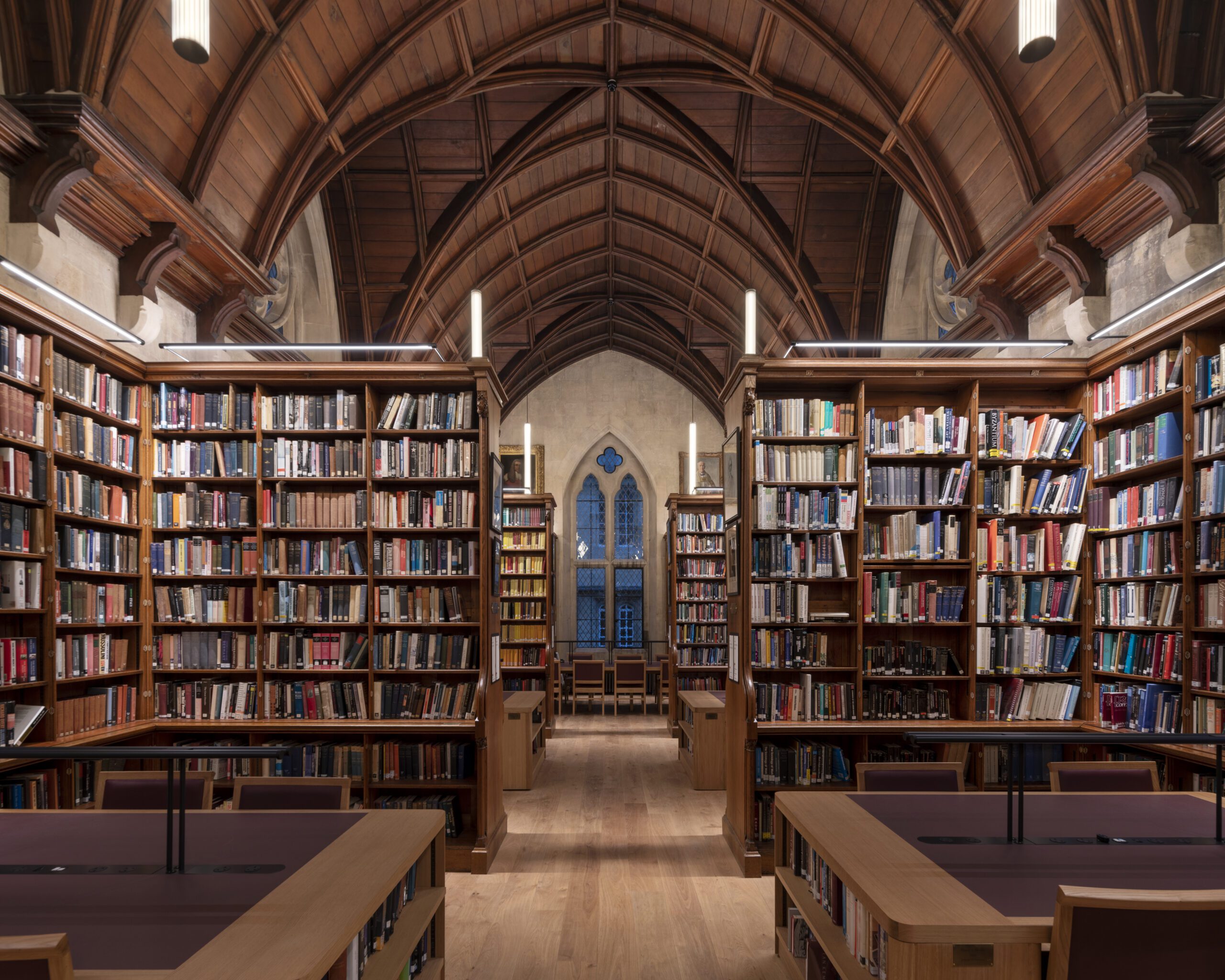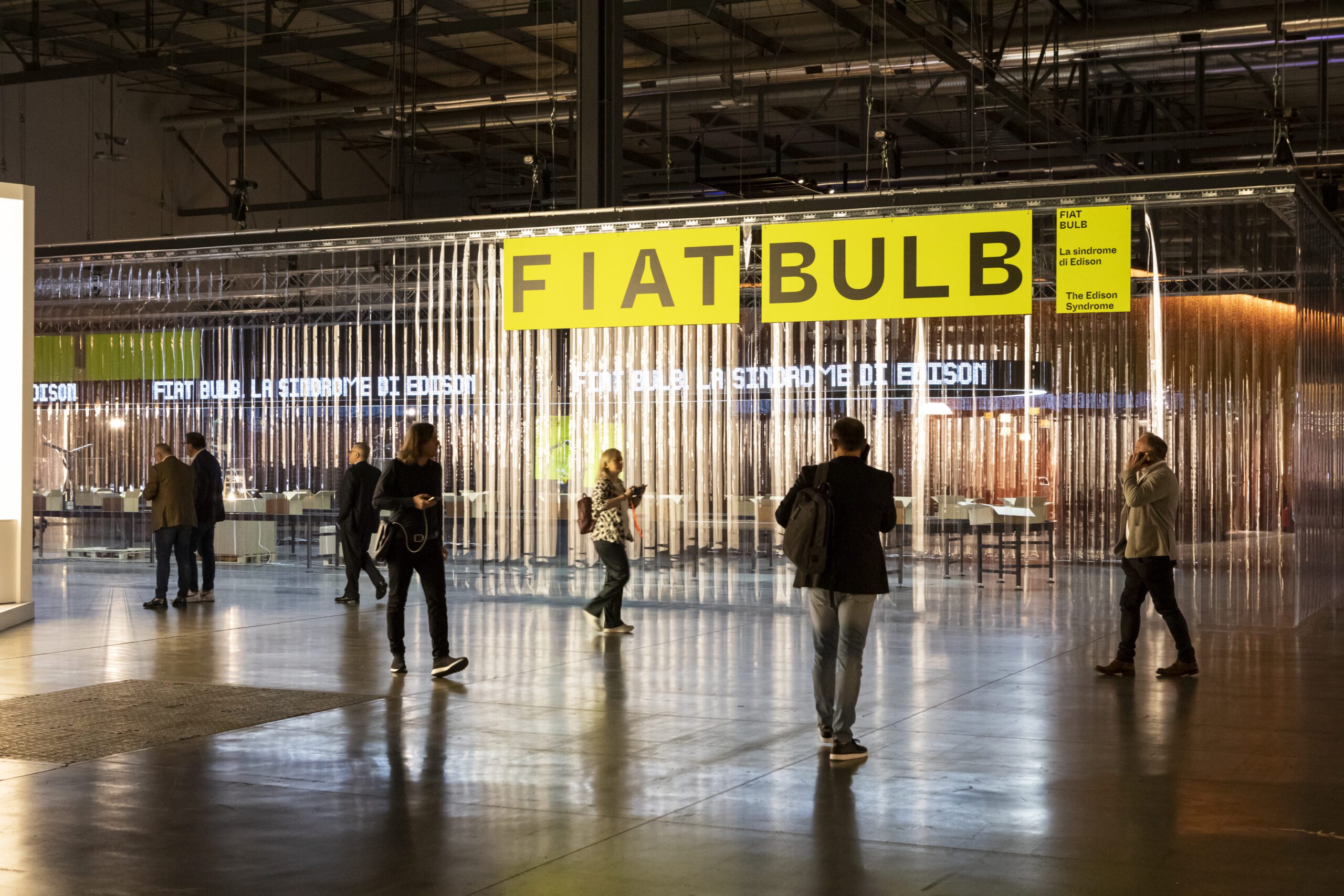DHA Designs proudly announce the completion of a transformative lighting design project for the historic Exeter College Library. Originally constructed in 1857 by renowned architect George Gilbert Scott, the neo-gothic library is a treasured architectural gem in Oxford.
The library is one of several works by Scott at the college and is situated overlooking the Rector’s Garden, adjacent to the 17th century walls of Convocation House, the Grade I listed historic court room of the Bodleian Library, separated only by a sliver of ground between buttresses.
The project’s primary challenge was to meet the needs of the college and its students while honouring the library’s heritage. Key to this was the provision of suitable lighting for reading desks and bookshelves, alongside creating a calm, inviting atmosphere that encourages study.
The main building, spanning the ground and first floors, features tall, free-standing bookcases that were meticulously removed and refurbished, which allowed DHA Designs to fix lights and cabling to the tops of these cases without damaging their fabric. These cantilevered lights then cast light down over the shelves. Additionally, an uplighting system on top of the bookcases highlights the intricate decorative ceilings, showcasing the library’s architectural splendour.
Custom-made oak desks, equipped with integrated task lights, offer students personalised control over their lighting. These task lights not only blend seamlessly with the bookcases but also feature energy-saving automatic shut-off functionality.
The ground floor features long reed glass pendants suspended over the desks, while the first floor boasts a tall reeded glass light that accentuates the room’s height, drawing attention to the wooden ceiling and stone-framed windows. The restored windows, showcasing stained-glass roundels by Edward Burne-Jones and crafted by William Morris’s factory, now find new resonance through modern light fittings that utilise diverse glass types to create varied atmospheric effects. Specially commissioned dichroic glass fins in the roof light of the new circulation spaces further enhance this interplay of light and glass.
The annexe continues the theme with similar reading and bookcase lights. Concealed uplights within the bookcases and the new clerestory provide an airy, illuminated environment. At the ceiling level, four large pendants outline the space, creating a striking visual effect.
In the historic turret stairs, outdated surface-mounted bulkheads have been replaced with a continuous low-profile LED extrusion that discreetly illuminates the space – running vertically up the side of the wall, disappearing into the steps to reappear on the next level. The dome of the turret and the figure that supports it have been illuminated for the first time using discreet spotlights placed at the top of the profile.
All lighting elements are connected to a sophisticated control system, allowing for dimming and switching based on time of day or student needs. This ensures an optimal balance of lighting and energy efficiency, tailored to the dynamic requirements of the library’s users.
Des O’Donovan, Director at DHA Designs said “Completing the lighting design for Exeter College Library hasn’t been without its challenges, but it’s been a truly rewarding project. Our goal was to enhance the heritage features of the college, whilst providing an environment that students find comfortable to study in. We are proud to have created an inviting and inspiring environment for students and scholars alike.”
With a deep understanding of architectural context and of creating lighting design schemes for heritage projects, DHA Designs collaborates closely with clients to create lighting designs that enhance both the historic features and functionality of spaces. The lighting design for Exeter College Library respects its historical significance while also enhancing its functionality for the future.
Project credits:
Client: Exeter College, Oxford
Lighting Design: DHA Designs
Architect: Nex
Heritage Consultant & Conservation Architect: Donald Insall
Services Engineer: Laurence Owen
Photography: James Newton






